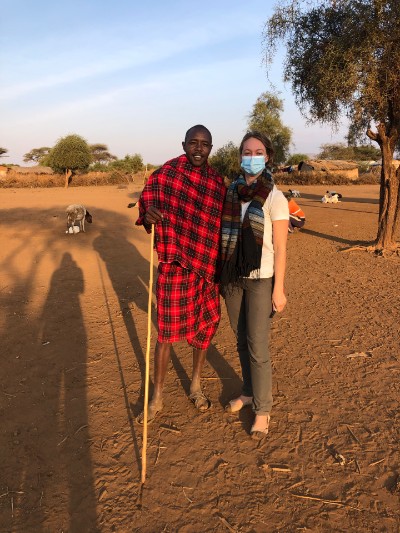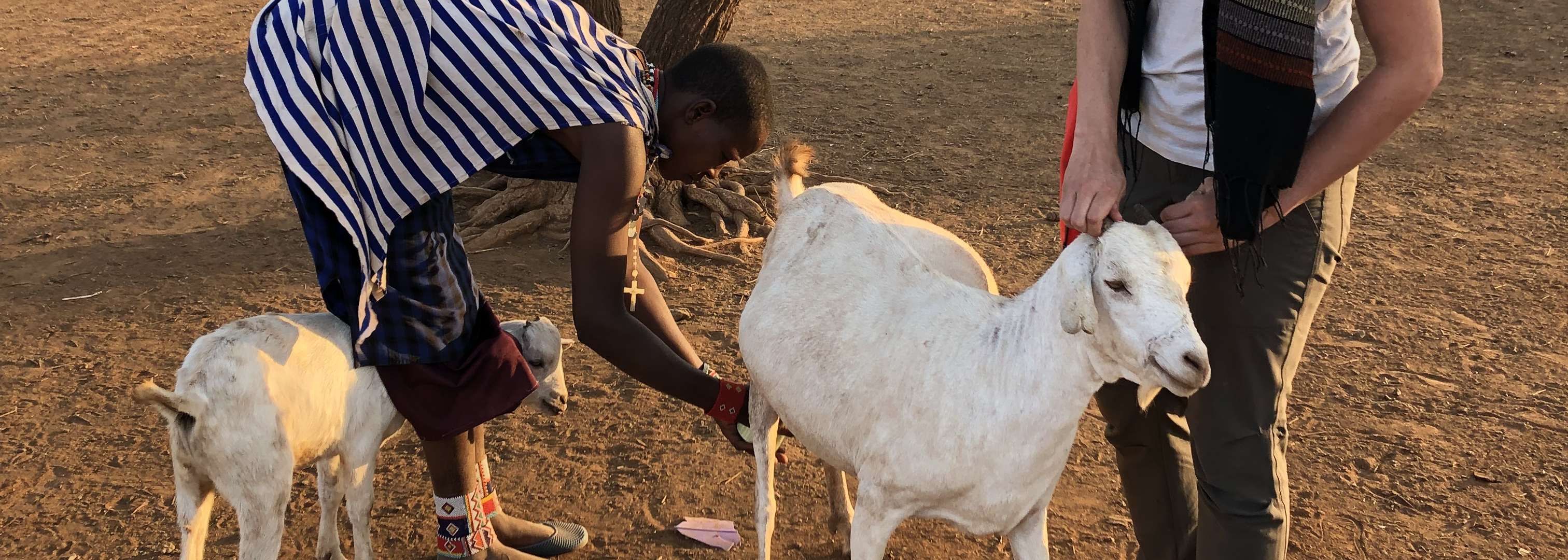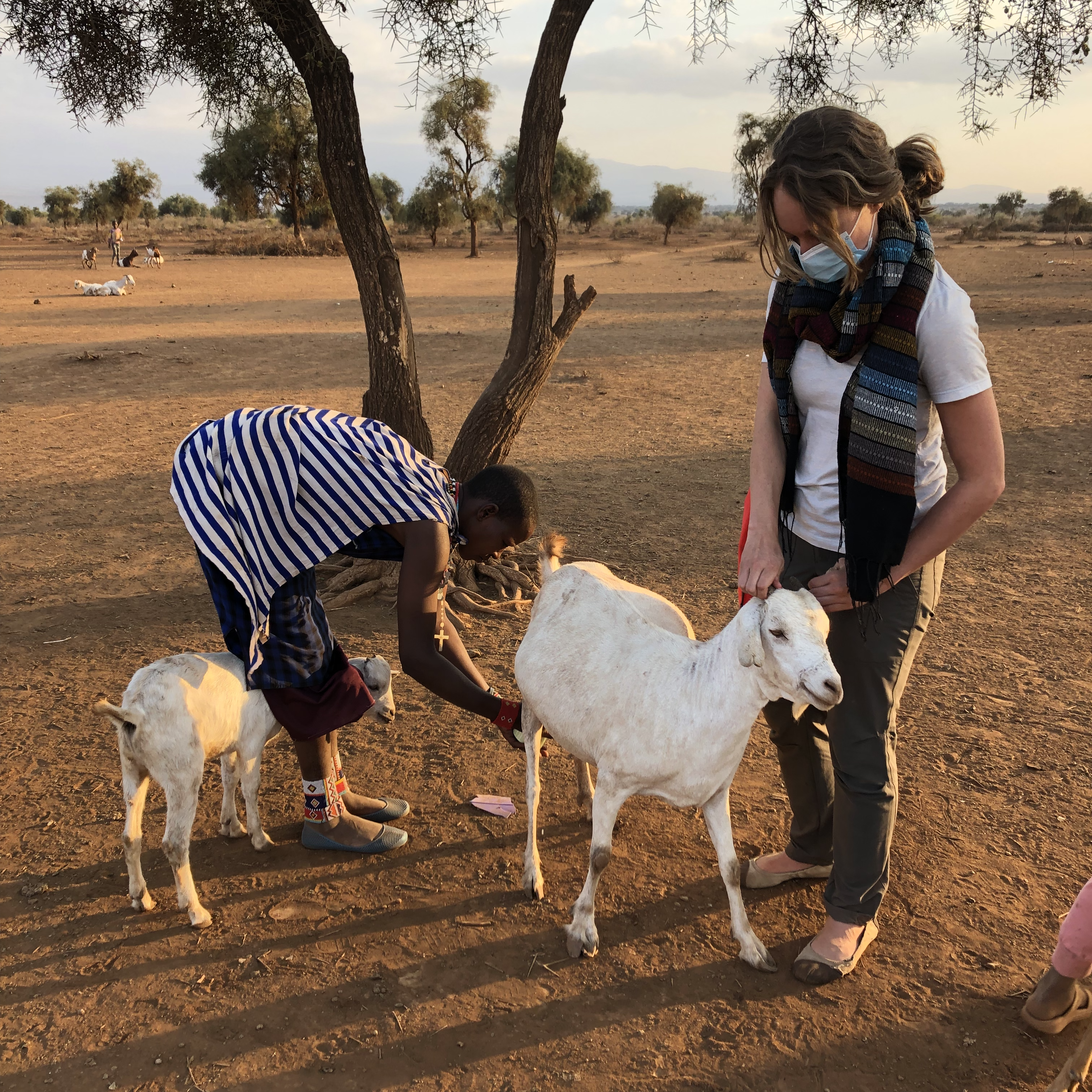Published: 07/25/2022
With animal-borne diseases an increasing concern worldwide, Stanford Global Health researchers and their colleagues have created a proactive screening method for one deadly illness
By Jamie Hansen, Communications Director at the Stanford Center for Innovation in Global Health
At a time when the world is on high alert for disease spreading between animals and people, the ability to detect viruses early and in new settings is key to stopping its spread. Researchers from Stanford and their partners in Kenya have designed a proactive screening system for one dangerous zoonotic disease, Rift Valley fever, that they think can help prevent future outbreaks.

Rift Valley fever is a viral disease that was first detected in the early 1900s in Kenya’s Rift Valley and is listed by the World Health Organization as one of nine priority diseases of special concern for causing epidemics. It causes severe disease in livestock, including cattle, sheep, and goats. While illness is mild for most people, about 10 percent of those infected go on to develop severe symptoms including hemorrhagic fever, eye disease, encephalitis, and death. It spreads to people both from infected mosquito bites and from sick livestock to the humans who handle them — including herders, farmers, and slaughterhouse workers. Large livestock outbreaks can increase the chances of people contracting the virus.
The virus has devastating financial costs when it leads to the death of livestock and loss of livelihood for those who rely on those animals as their only source of income. In the 1950s, more than 100,000 sheep died in Kenya as the result of a large outbreak. Since then, dozens of large outbreaks have impacted Sub-Saharan Africa. More recently, the virus has been found outside of Africa in Yemen and Saudi Arabia.
In late April of 2022, Stanford researchers Desiree LaBeaud, MS, MD, Keli Gerken, DVM, and their Kenyan colleagues made a new and surprising discovery: For the first time, evidence of the virus was found in a sample of fresh milk that had been brought to an urban center from the surrounding regions to meet high demand.
Consuming raw milk has been a long-recognized epidemiologic risk factor for exposure, but the virus had never been found there until now. This new finding helps fill a longstanding gap – and serves as a breakthrough for new public health interventions, providing an opportunity to improve early detection of the virus through more consistent monitoring.
“This is huge news for Kenya, because Rift Valley fever has enormous economic and public health consequences,” said LaBeaud, who has worked extensively combatting insect-borne illness in Kenya.
This is huge news for Kenya, because Rift Valley fever has enormous economic and public health consequences,” said LaBeaud, who has worked extensively combatting insect-borne illness in Kenya.
—Desiree LaBeaud
The Path to a Surprising Discovery
The recent finding resulted from a novel system for tracking Rift Valley fever virus that the team recently developed with funding from Stanford Center for Innovation in Global Health (CIGH) seed grant and United States Department of Agriculture Research Service (USDA-ARS).
The partnership began when Gerken, a veterinarian by training, received a Global Health Equity Scholarship (GHES) funded by the Fogarty Foundation in 2020 and began working with LaBeaud in Kenya.
“I’m one of those people who wanted to be a vet since I was a little kid, but I didn’t know how to integrate this with my passions for global health,” she said. “Working with Desiree – and seeing her determined, interdisciplinary approach to research – was inspiring.”
LaBeaud said the CIGH support has also helped continue a legacy a legacy of Rift Valley fever research and mentorship in Kenya.
“I started my own research working on RVFV in Kenya in 2003 with my mentor, Charlie King, and now a new generation is continuing that work. It is very exciting and touching to watch Keli continue a decades-long tradition of One Health research on Rift valley fever virus,” she said.
When the two researchers received a Global Health Seed Grant from CIGH in 2021 to study the risk for human infection posed by animals, they decided to focus on Rift Valley fever virus – an important but overlooked threat to public health and economic resilience whose transmission was still not fully understood.
Recently, the virus has been showing up more frequently, a sign that the disease has become endemic in Kenya. This change is likely driven by climate change and population growth, Gerken said. Given that these pressures will only increase, it is critical to further improve surveillance, she noted.
A recent publication by Gerken, LaBeaud, and colleagues in PLOS Global Public Health underscored the risk to urban areas for Rift Valley fever transmission from animal-sourced foods when it found some exposure to the virus in urban areas. It linked this unexpected exposure to milk consumption — independent of the most common risk factor, livestock ownership.
To get a better sense of how the disease spread from animals to humans, they set up a system to collect and test blood samples from slaughterhouses for the virus. Animals were already being brought from rural areas to urban areas to be slaughtered in high numbers to meet the urban demand – providing a potent opportunity to develop a community-engaged, expansive system for testing.
“In this setting, we can screen blood from slaughtered animals for the virus, find out where that animal came from, and track the virus back to the source,” Gerken said. This system also allows researchers to train urban workers most at risk for the disease how to protect themselves, she said.
In the field, Gerken and her Kenyan collaborator, Dr. Bryson Ndenga of the Kenya Medical Research Institute in Kisumu, trained slaughterhouse workers to take blood samples, which reliably provided basic epidemiological data on each individual animal. They also collaborated with slaughterhouse workers to create a map of the animals’ origins to be able to track infected animals’ geographic roots — which would be critical to warning public health authorities of potential outbreaks in different parts of the country.
Another primary investigator based at Stanford, Krish Seetah, PhD, guided the methods for an additional portion of the study that gathered qualitative data to help understand which markets and routes to the markets were more popular – and why.

With additional funding from the USDA-ARS’ new high-containment research facility in Manhattan, Kansas, Gerken, Ndenga and LaBeaud recently began to apply the same system of testing samples to milk brought in from rural areas and sold at urban markets.
Gerken recalls receiving a text about the RVFV discovery from their lab manager, Christabel Winter, early one Saturday morning in April. “She had stayed at the lab late waiting on the re-test results,” Gerken said. “I remember an instant feeling of validation. I knew if we were going to find the virus at our urban sites, it would be through the milk vendor system. I’m really glad they agreed to work with us.”
From Discovery to Prevention
Ndenga, a long-term research colleague of LaBeaud and mentor to Gerken, said the discovery emphasizes the need for a One Health approach to tackling the increasing challenges posed by zoonotic diseases. One Health recognizes the interconnection of people, animals, and the environment while using community-engaged, multidisciplinary approaches to health challenges.
“The novel finding of RVFV in milk in an urban setup is a huge milestone in the epidemiology of this disease,” he said. “It is now clear that the risks of RVFV spreading into urban areas is higher than we thought, and it presents a great need for constant surveillance through cost-effective methods like the ones developed by Dr. Gerken.”
It is now clear that the risks of RVFV spreading into urban areas is higher than we thought, and it presents a great need for constant surveillance through cost-effective methods like the ones developed by Dr. Gerken.
—BRYSON NDENGA
Since May, Gerken’s team has detected evidence of the virus in milk twice.
They will soon submit a paper on their recent discovery in milk and their novel surveillance system to an open-access public health journal, and they have shared their findings with the Kenyan Ministries of Health and Agriculture in Kenya.
Gerken said she hopes the discovery can lead to a more systemic, preventative response by the Kenyan government.
She will soon be pursuing a clinical PhD program withUniversity of Liverpool based at the International Livestock Research Institute, where she will spend the next three years living in Kenya conducting research on Rift Valley fever using similar surveillance methods — with the hope of better understanding endemic disease risk and developing an outbreak response tool that can test how effective control measures would be even when one case is detected.
There will always be someone upstream, milking the animal, who will be at risk. The more cases we find, the more we need to get at the underlying reasons why outbreaks spread and advocate for preventive measures to protect that person upstream
—Keli Gerken
“If we’re finding sporadic cases here and there, it’s likely the tip of the iceberg, and we need to use every diagnostic tool we have, including sampling more milk and not relying on just a reactive approach like boiling milk to kill the virus,” she said. “There will always be someone upstream, milking the animal, who will be at risk. The more cases we find, the more we need to get at the underlying reasons why outbreaks spread and advocate for preventive measures to protect that person upstream.”
Lead photo caption: A Maasai woman provides a milk sample from her goat to. be tested for Rift Valley fever virus, a dangerous zoonotic virus endemic in this area of Kenya. Courtesy of Keli Gerken.

